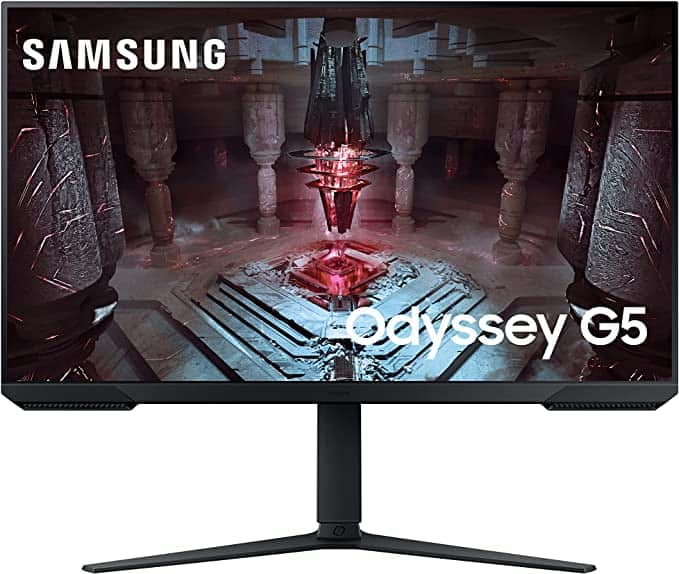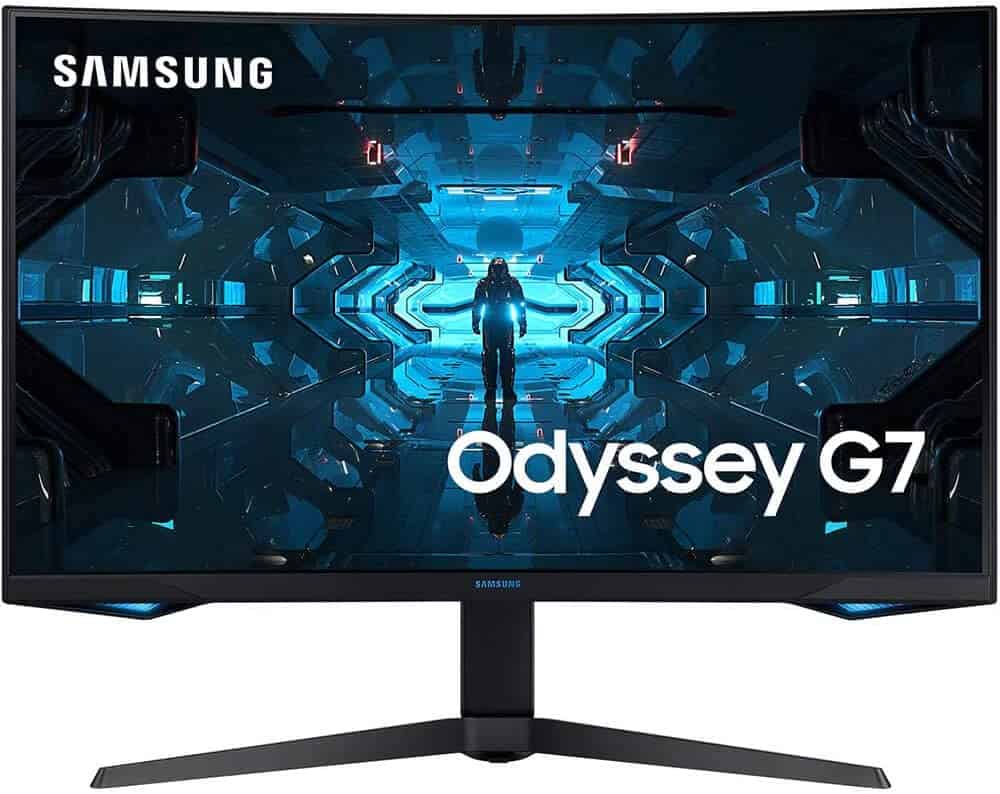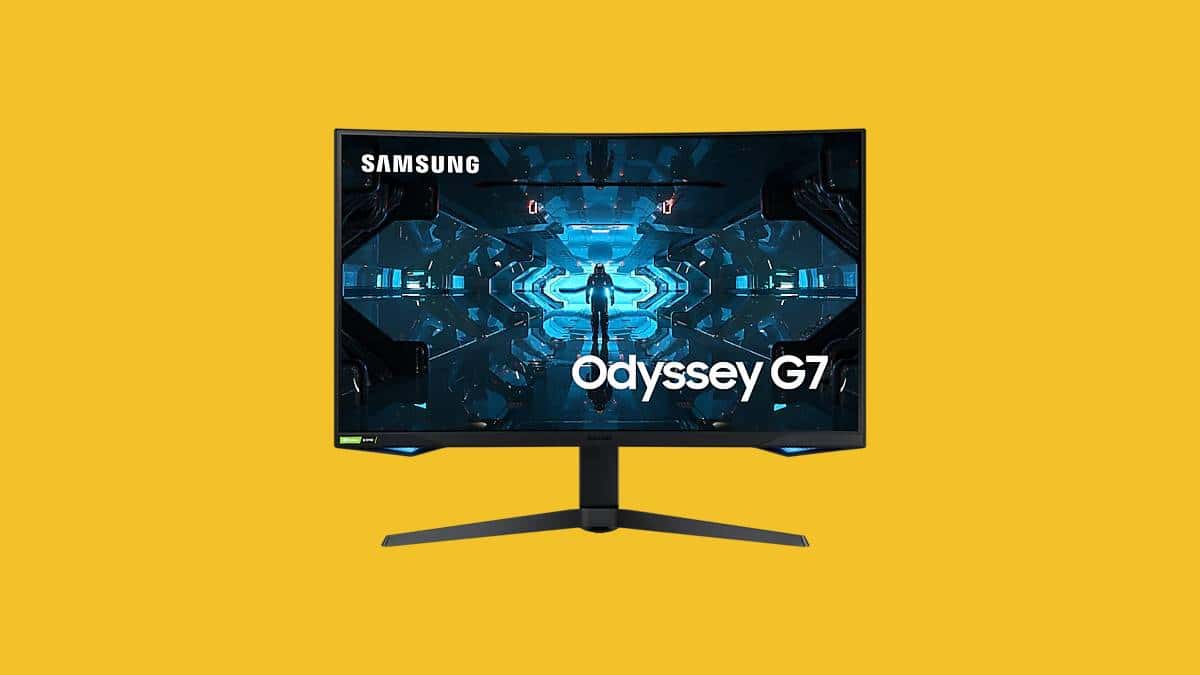Video Gamer is reader-supported. When you buy through links on our site, we may earn an affiliate commission. Prices subject to change. Learn more
Looking for the best 1440p gaming monitor? We’ve got you covered with our top picks right here. For competitive gamers playing e-sports, you might be thinking that grabbing a 1440p gaming monitor will improve your gameplay. You’re not wrong – having a sharp, crisp monitor with an ultrafast refresh rate is so crucial in games that require snap reflexes and quick thinking. QHD monitors, sometimes also known as 2K monitors, are the first choice for many gamers. Offering up a surprisingly efficient compromise between price, quality, and performance – you will find it hard to game on something better.
Here’s what we think are the best 1440p gaming monitors
The fact that industry-leading 240Hz gaming monitors are now often 1440p should streamline your decision-making process significantly. This is the preferred combination for competitive gamers. You might also be thinking why you would buy a 1440p monitor over the a 4K gaming monitor – and the answer is price. What’s more, if you’re looking for the monitor for your Xbox Series S, our choices for 1440p gaming monitors will kill two birds with one stone as the console is actually capped at QHD resolution.
Enough blabbing though. The readers must think we love the sounds of our own voices. We’ll save you some time and say that we think the best 1440p gaming monitor for most people is the Samsung Odyssey G51C.
Read on for our other top picks, and remember, we keep this page constantly updated with the latest products so you can make the most informed decision possible when it comes to buying a QHD monitor.
1. Samsung Odyssey G51C
Samsung Odyssey G51C

Screen Size
27in
Resolution
2560 x 1440
Response time
1ms
Refresh rate
165Hz
- HDR10
- VRR
- Comfortable ergonomic design
- 2 x HDMI 2.0, 1 x DisplayPort
- No HDMI 2.1
First up, this monitor ticks all the right boxes. It boasts a 165Hz refresh rate, AMD FreeSync, and 1ms response time, with low input lag. These specs stand the monitor in good stead for FPS games and Esports games. In fact, it even comes with Virtual Aim Point that features crosshairs on the screen to help improve your overall precision.
This monitor can also support HDR and has HDR10 in fact. This allows for bright whites and deep blacks, plus a wide color gamut too, which should really make your games pop. Of course, if you like the sound of that, you should consider HDR monitors too for a wider selection.
Unlike some cheaper monitors, the Samsung Odyssey G51C also has an excellent ergonomic design that should also heighten your gaming experience. With height, tilt, and swivel adjustment, there’s no real need to purchase a monitor arm – but if you wish to you can as this has the standard Vesa mount.
There is a draw back, though. This monitor doesn’t have an HDMI 2.1 port. Instead, you’re going to be relying on HDMI 2.0 and DisplayPort – the latter of which is likely going to be your preferred option.
2. Samsung Odyssey G7
Samsung Odyssey G7

Display Size
27in, 32in
Resolution
2560 x 1440
Response time
1ms
Refresh rate
240Hz
VRR
G-Sync and FreeSync
- Snappy response time
- Compatible with both FreeSync and G-Sync
- On the expensive side
The Odyssey G7 is one of the top gaming monitors on the market at the moment available in 1440p. Though 4K monitors are becoming increasingly more affordable – it’s not often you can find an ultrafast refresh rate on one. That’s where 1440p monitors shine – the Odyssey G7 in particular has a 240 hertz refresh rate meaning that it’s perfect for competitive gaming.
The video above notes the quality of the monitor: “Gaming was buttery smooth, colors were incredibly accurate, and immersion was at the highest level.” courtesy of our good friends at WePC, who have also provided an astounding review of the monitor.
A high refresh rate means you can make use of the higher FPS’ that the leading graphics cards capable of QHD can bring giving you the edge in fast-paced competitive games.
Freesync / G-Sync compatibility
This monitor was notorious upon its launch for a screen-tearing issue that some models shipped with. If you do end up choosing this one, make sure that you update the firmware before you begin. The latest firmware patches any compatibility issues with Freesync / G-Sync.
3. Samsung Odyssey G52A
Samsung Odyssey G52A

Screen size
27in
Resolution
2560 x 1440p
Response time
1ms
Refresh rate
165Hz
- Great HDR
- High build quality
- Blacks could be deeper
If you’re looking for a budget QHD gaming monitor, look no further than their impeccable Samsung Odyssey series monitors.
The Samsung Odyssey G52A is a great monitor with a higher refresh rate than the standard 144hz you typically see with this resolution. With a response time of 1ms – this is a great monitor for those looking to level up their competitive gaming experience without breaking the bank.
The contrast might not be as good as what you would ordinarily expect from quality OLED monitors. However, the fact that it supports HDR means that you can still enjoy good color and contrast when gaming.
4. LG UltraGear 27GL83A-B
LG UltraGear 27GL83A-B

Screen Size
27-inch
Resolution
2560 x 1440
Response time
1ms
Refresh rate
144Hz
- Great value for money
- Great connectivity
- Limited adjustability
The best cheap 1440p gaming monitor is the LG UltraGear Gaming Monitor 27GL83A-B – which sports a lightning-fast 144 Hz refresh rate, QHD (2560 x 1440Hz) resolution, HDR 10, and G-Sync compatibility.
Perfect for both gaming and general work use, the monitor benefits from the budget advantages of choosing a QHD display over a 4K display. We think this monitor would work nicely alongside a graphics card such as the RTX 4070 Ti – a component catered towards 2K gameplay.
Despite its lower price, you’re still getting a lot of the more premium features that a gaming monitor might provide. There is a practically bezel-less display, which allows you to lose yourself in the image, without distractions. The physical build of the monitor itself is also good, with a sturdy and stylish stand. Though, be warned, the stand doesn’t support swivelling, so you might consider an alternative arrangement for how it’s placed on your desk.
5. LG UltraGear 34GP83A-B
LG UltraGear 34GP83A-B

Screen size
34 inches
Resolution
3440 x 1440p
Response time
1ms
Refresh rate
144Hz
- Support for VRR
- Large display
- Only height and adjustment tilt
It’s safe to say that LG make some of the highest quality displays on the market. The UltraGear 34GP83A-B is a great ultra-wide curved gaming monitor bolstered by G-Sync compatibility and a 144Hz refresh rate. Alongside that, the 34-inches of curved ultrawide optic real estate are this monitor’s most attractive selling point.
The LG UltraGear 34GP83A-B is not necessarily aimed at competitive gamers – though if you were so that way inclined, the 144Hz refresh rate is more than enough for mid-weight e-sports. That being said, an ultrawide monitor is better suited for those looking to enjoy immersive, graphically intensive games.
How to pick a 1440p monitor for gaming
Here are a few expert tips and advice on picking the best 1440p monitor for you, as sometimes, the benefit of certain specs and features can be hard to see at first sight.
Viewing angle
Viewing angles are important with any gaming monitor, and as the name suggests, they’re great for seeing the image even when looking at the monitor from a wide angle. If you want the widest viewing angles, we’d advise going for an IPS panel.
Peak brightness
Peak brightness, measured in nits, is something you’ll want to make sure you have with a 1440p monitor especially. Thanks to the more affordable nature of QHD displays, it’s often tempting to skip this spec, but more brightness means that colors will be more vivid, contrast will be more contrasting and your display is going to create a much more immersive atmosphere. It also makes the screen stand out despite being in a well-lit room. Aim for a nit brightness of 350 or above.
Contrast ratio
A better contrast ratio typically comes with high dynamic range (HDR) support or a Vesa DisplayHDR certification. A higher contrast ratio will make darks darker, and brights brighter, which in turn makes the game’s graphics look more realistic. We’d suggest either an HDR-compatible monitor or something with DisplayHDR400 and above.
Adaptive Sync technologies
Nvidia G-Sync and AMD FreeSync are a must, and feature on practically every gaming monitor. They help by reducing screen tearing, ghosting, and motion blur, and are essential if playing fast-paced games. You can get different levels of both these technologies, such as AMD Freesync premium and more.
Pixel density
Pixel density is something to keep in mind when deciding on a monitor for your gaming set-up. The higher the pixel density, the clearer the image will look when stretched across a larger space. The sweet spot for 1440p monitors is between 27 – 32 inches.
Ports
There are a few ports you’ll want to look out for. Many industry-leading monitors have USB-C ports that can make your life easier, especially if you’re planning on using your monitor as a USB hub to charge your phone or other devices. Who actually does that, though. It also helps to keep cable clutter to a minimum. With 1440p monitors, you don’t really need to check if it has HDMI 2.1 ports, as both PS5 and Xbox Series X monitors need this to play games in 4K at 120fps. If you plan on connecting your gaming PC and another device to the same monitor, you’ll want at least a few HDMI or DisplayPorts for sure.
Frequently Asked Questions
Are 1440p monitors good for gaming?
You don’t necessarily need a 1440p monitor for gaming – however the resolution is higher than a 1080p monitor, and the refresh rate has the potential to be ultra-fast.
1440p vs 4K gaming monitors?
Ultimately, a 4K monitor with a high refresh rate will be better for gaming than a 1440p monitor due to the higher resolution. That being said, 1440p monitors aren’t bad at all.
Does a 1440p monitor affect FPS?
Yes, typically a 1440p monitor will have higher processing times because it’s processing more pixels than a 1080p monitor. However, if you have a powerful GPU like the RTX 3080 or higher, you’ll find your monitor shouldn’t struggle with higher resolutions.
Is 1440p worth it?
1440p is a fantastic middle-ground between 4K and 1080p. Being cost effective means manufacturers can afford to build displays with the fastest refresh rates and lowest input lags – making the monitors perfect for competitive gamers.
What is QHD?
QHD is the general term for 1440p resolutions. It stands for Quad High Definition, as it is four times bigger than 720p.



